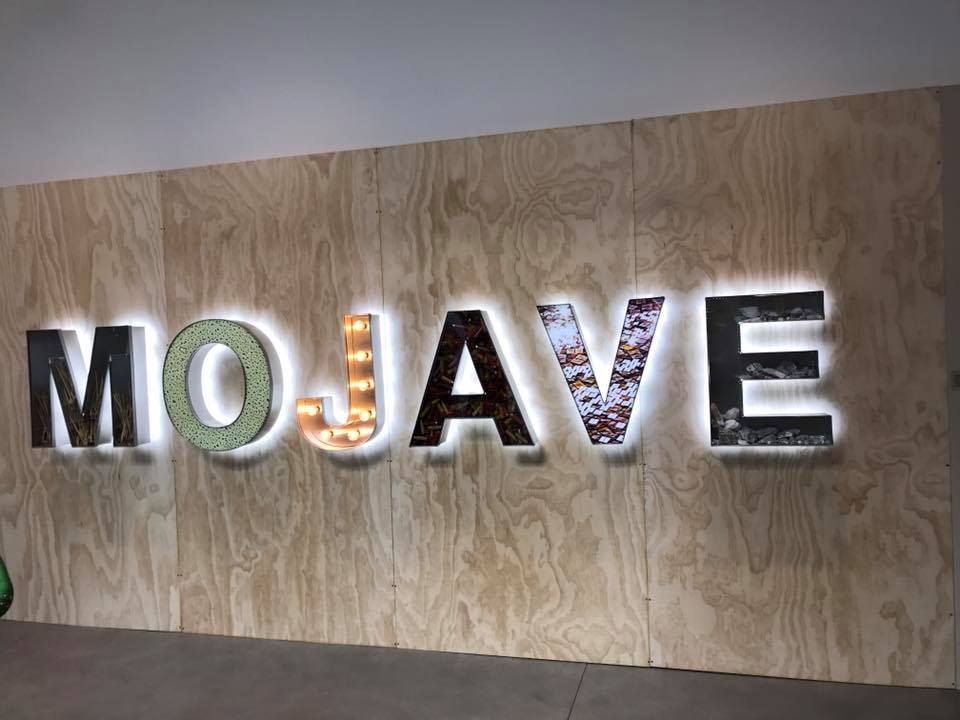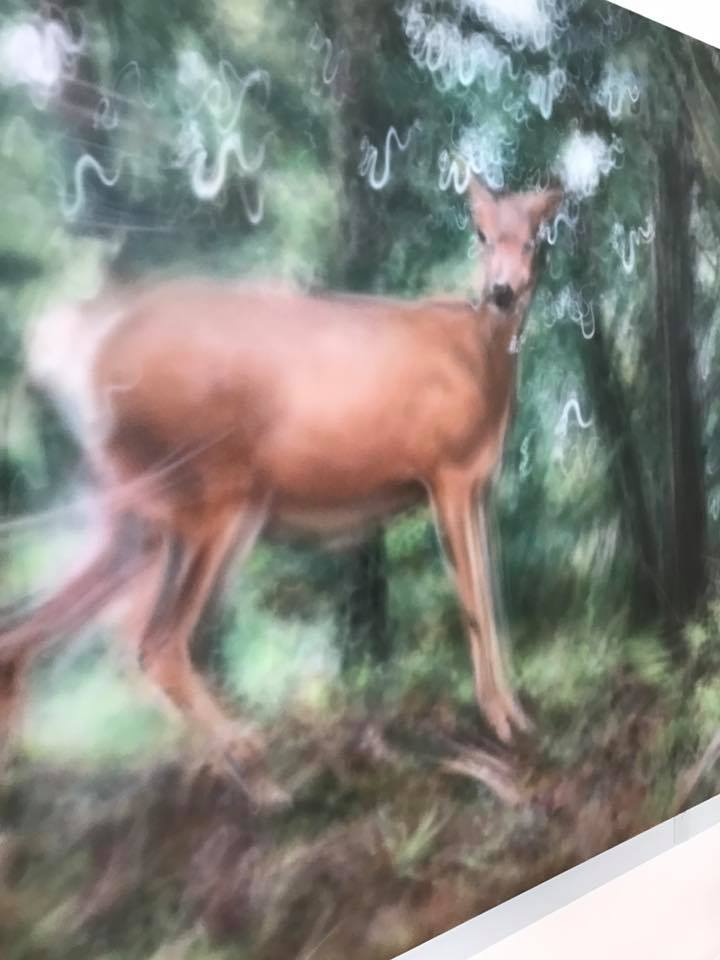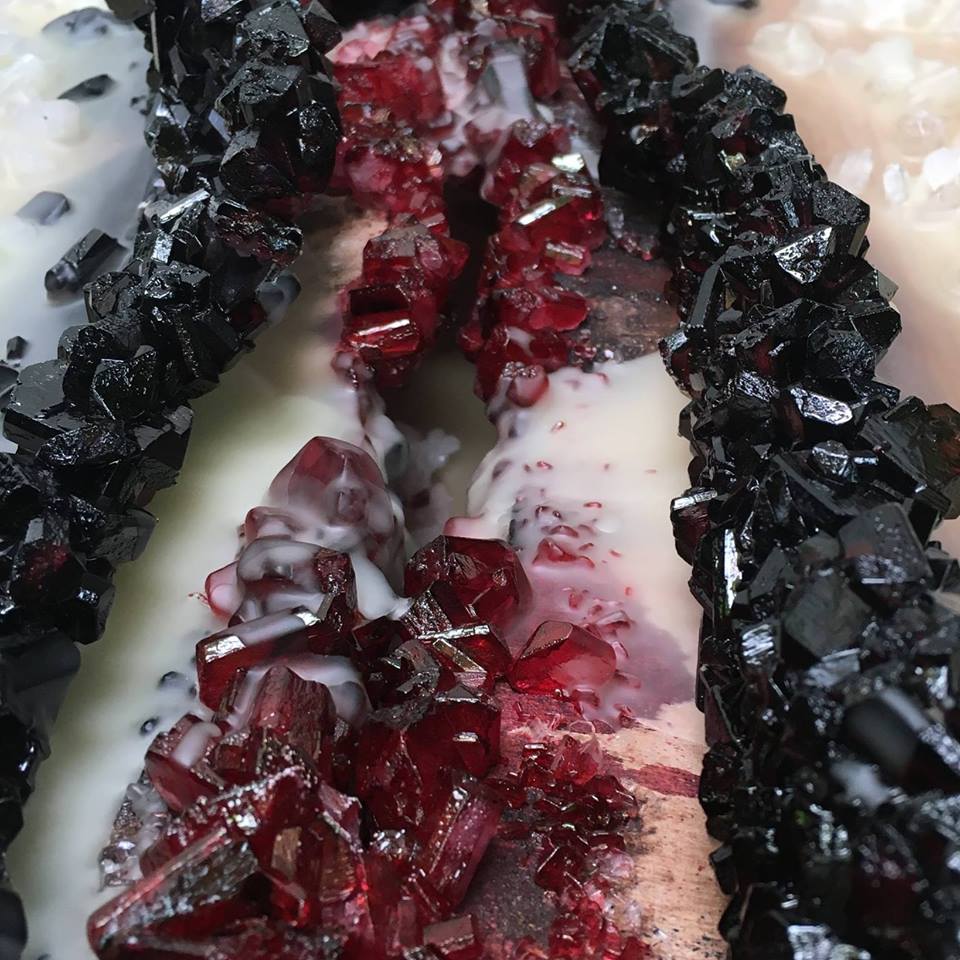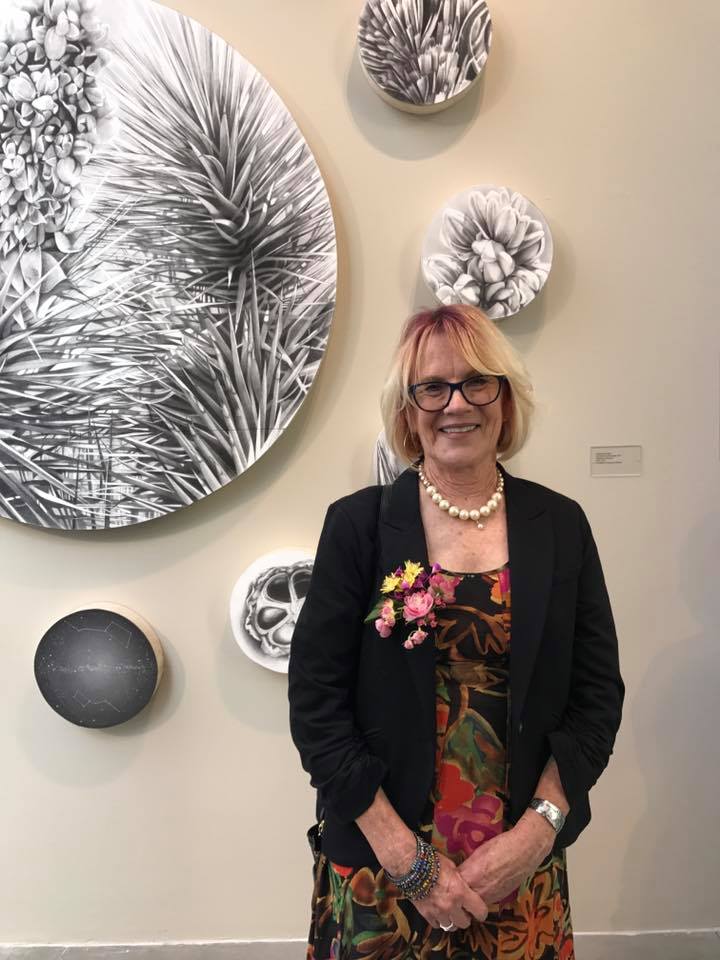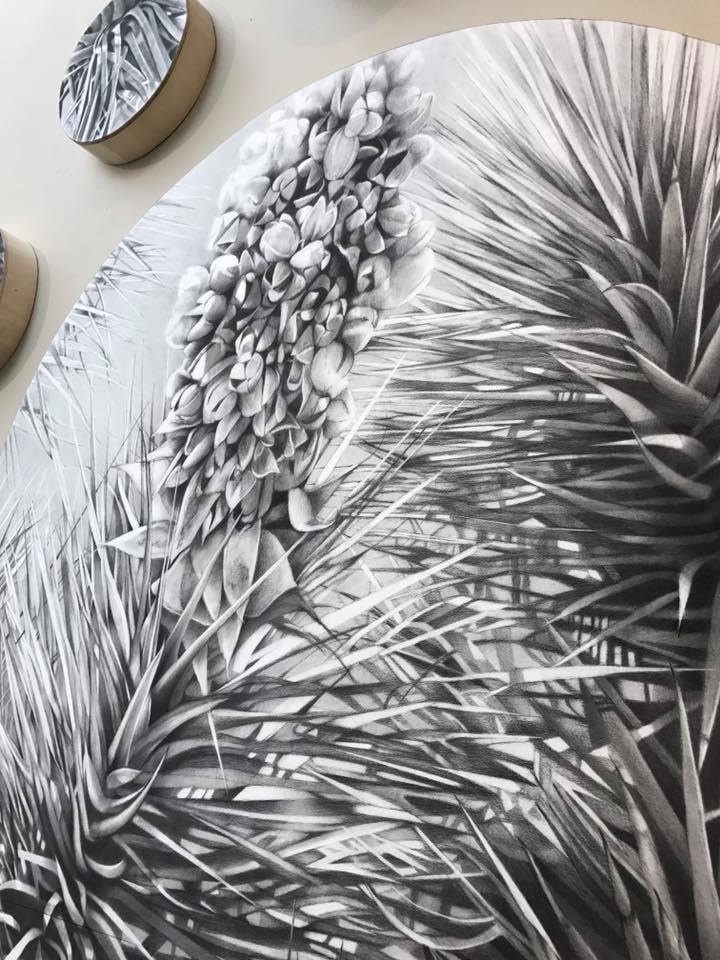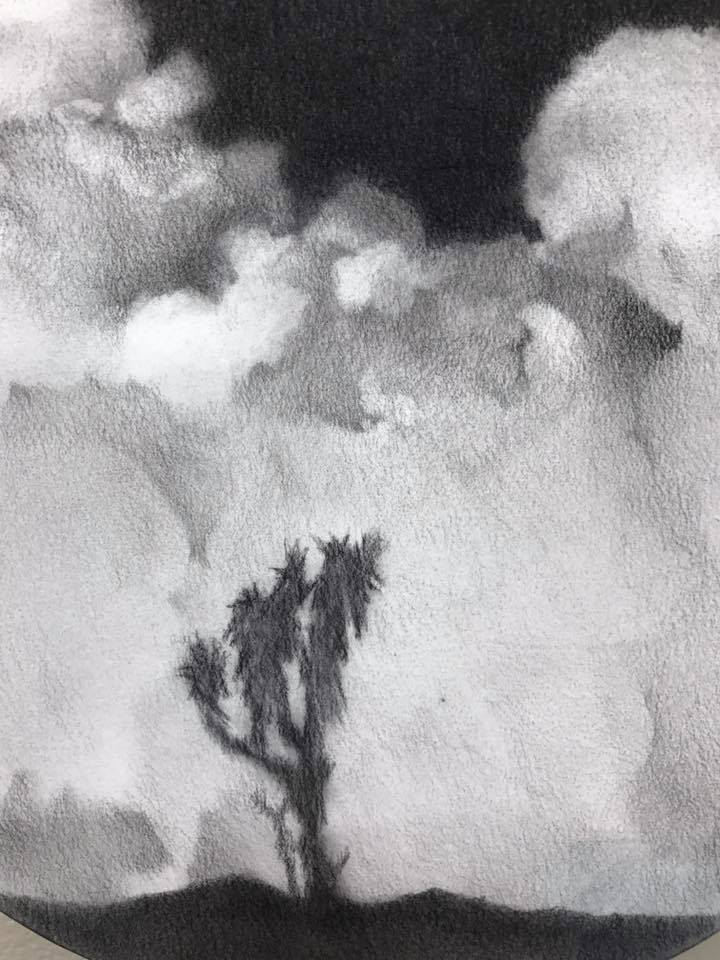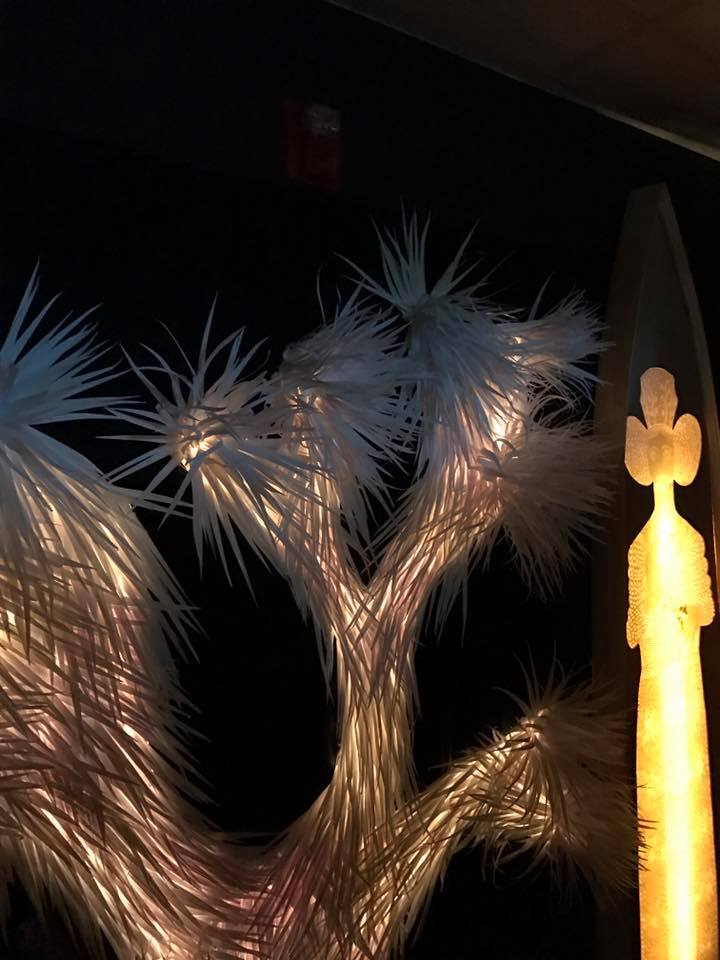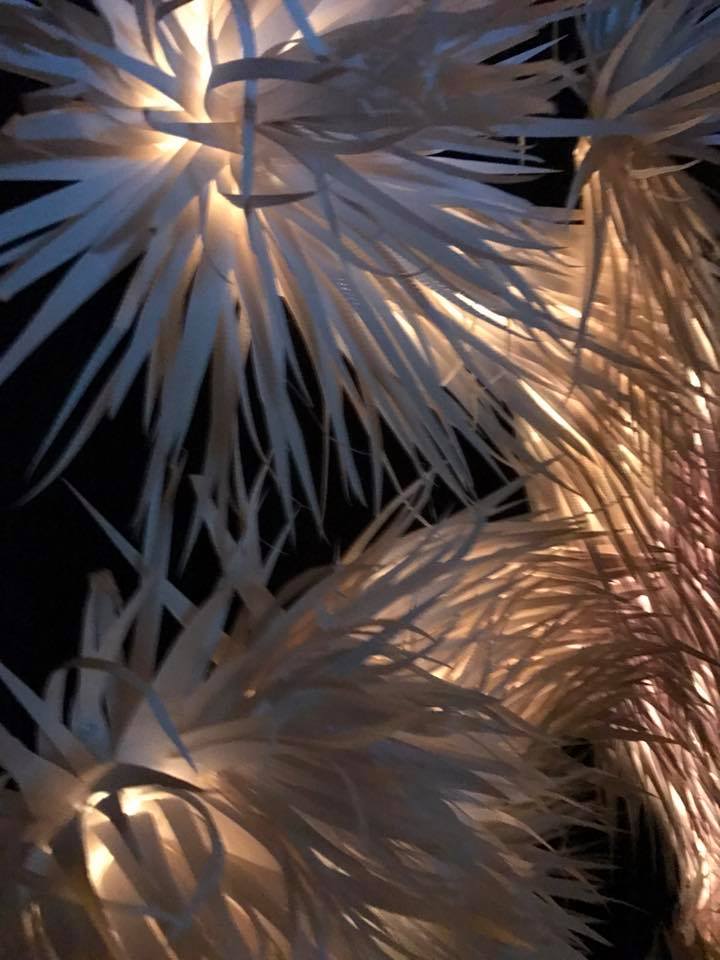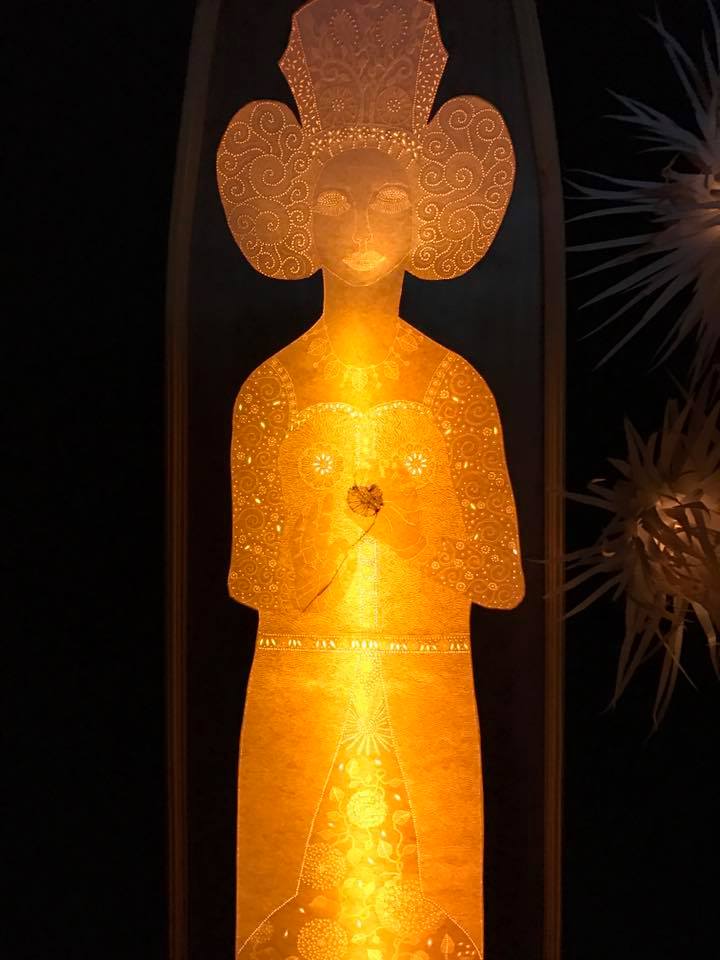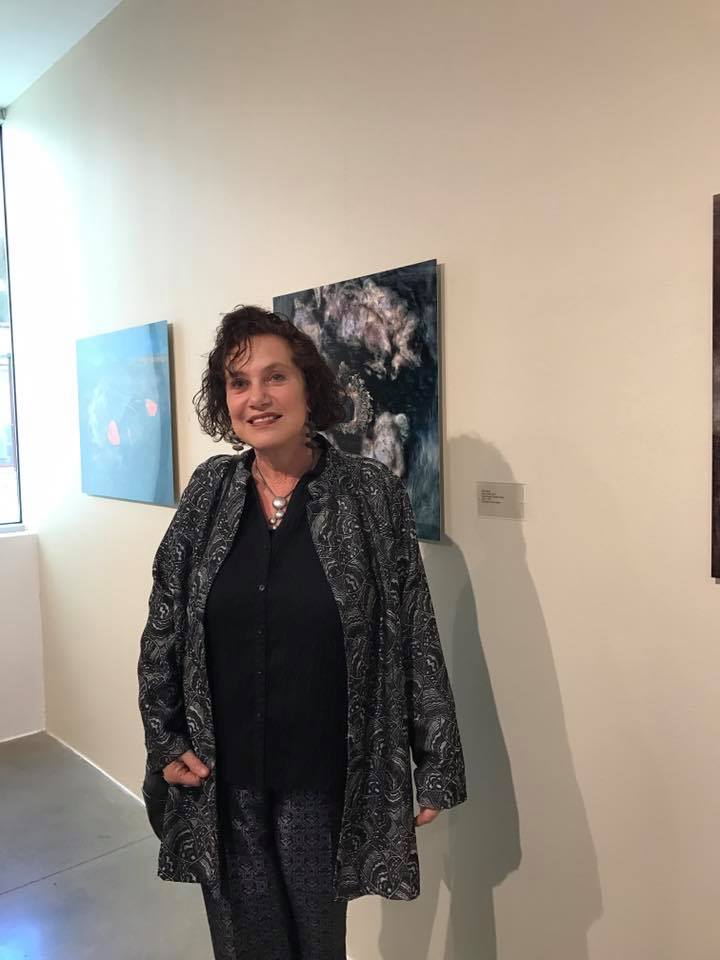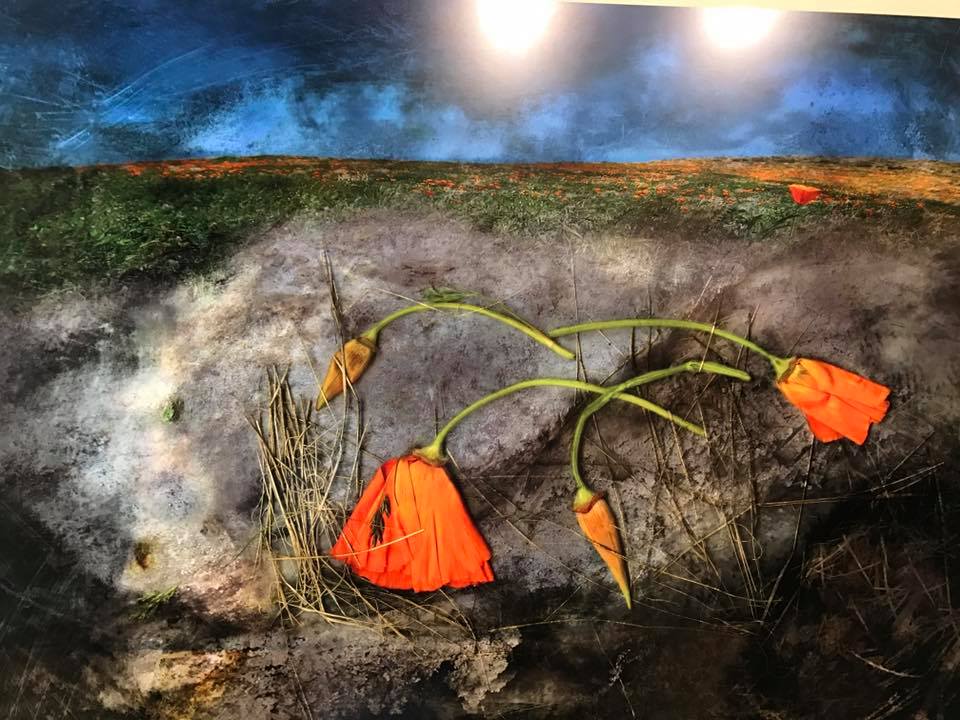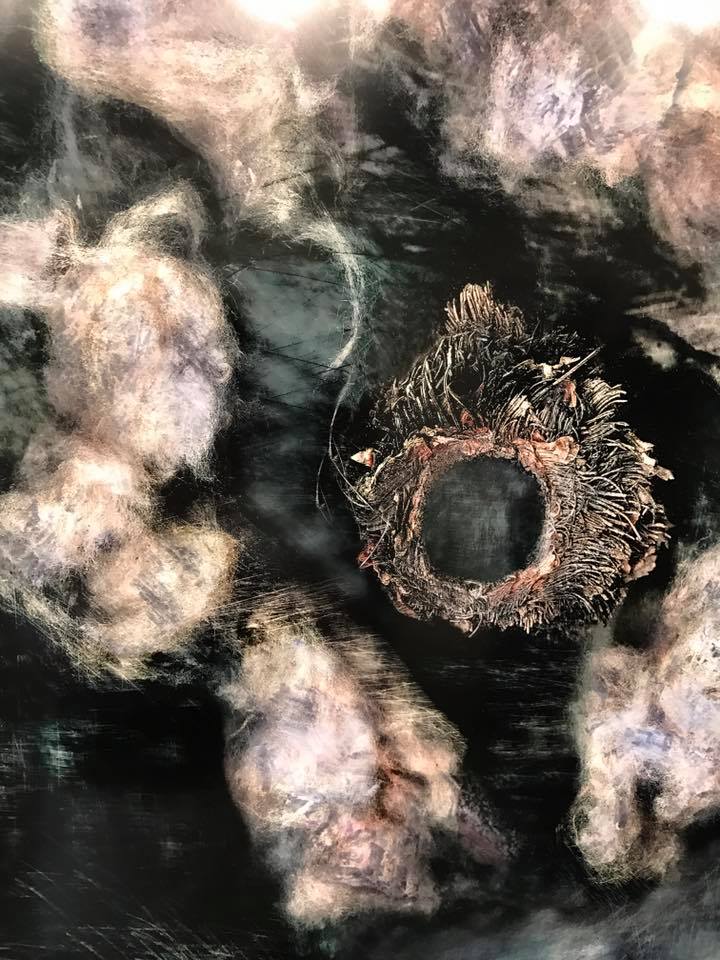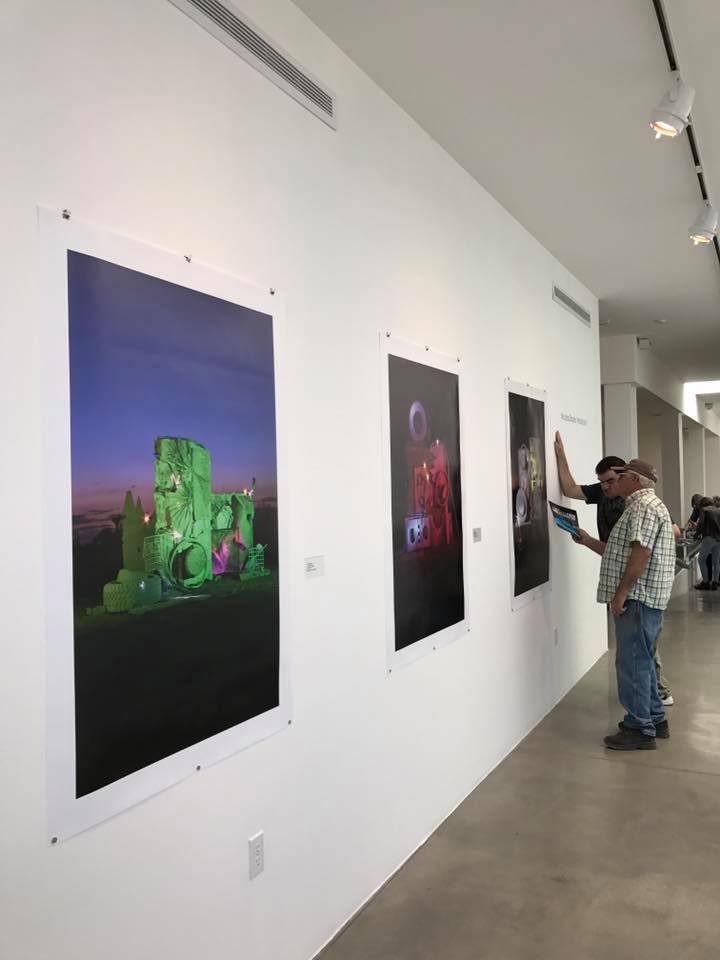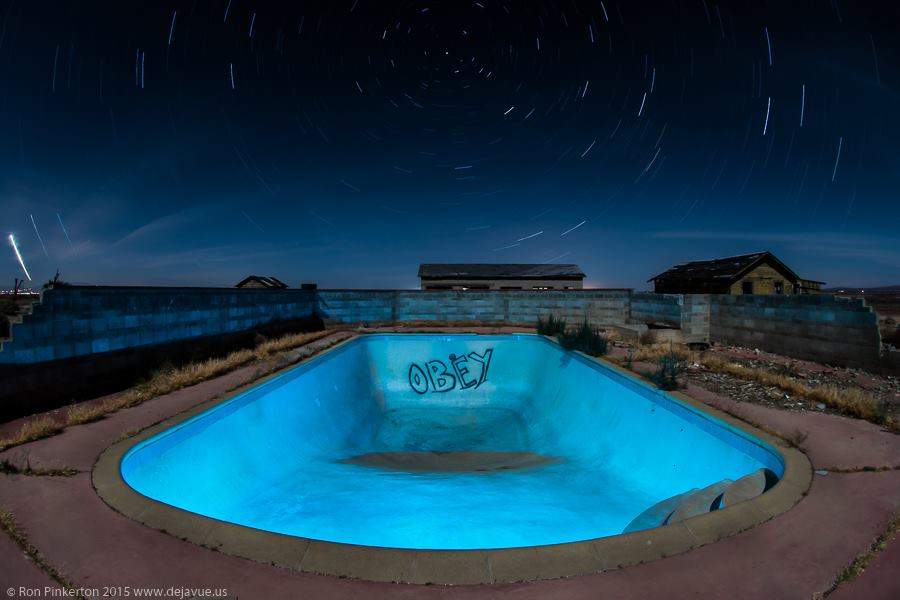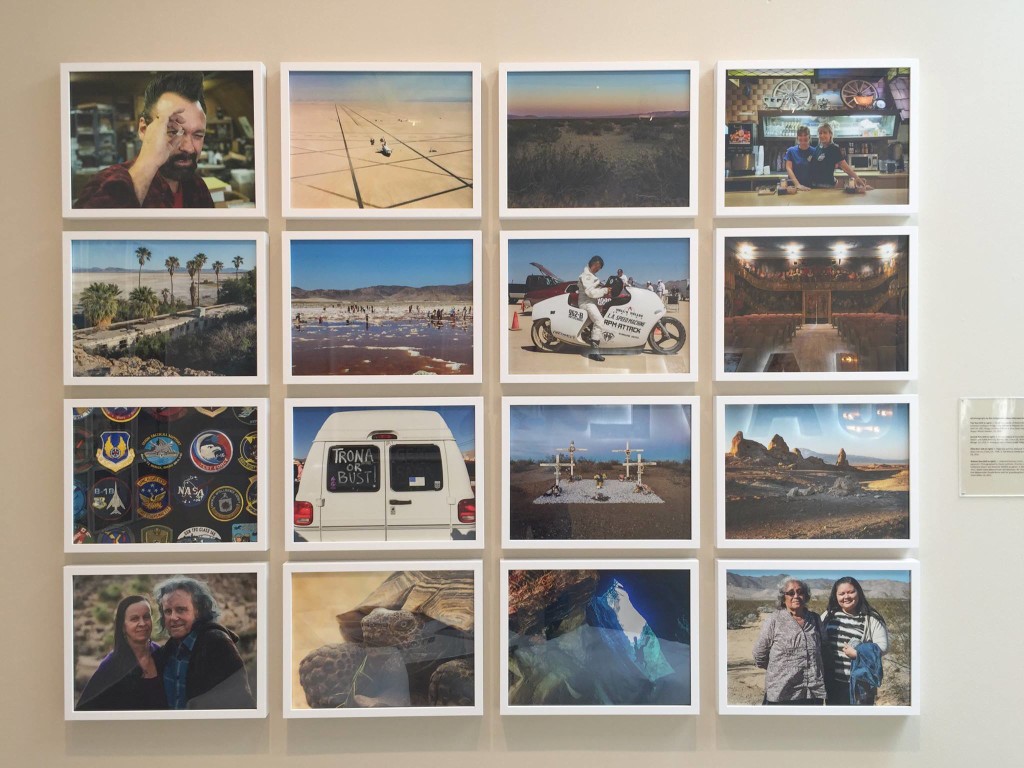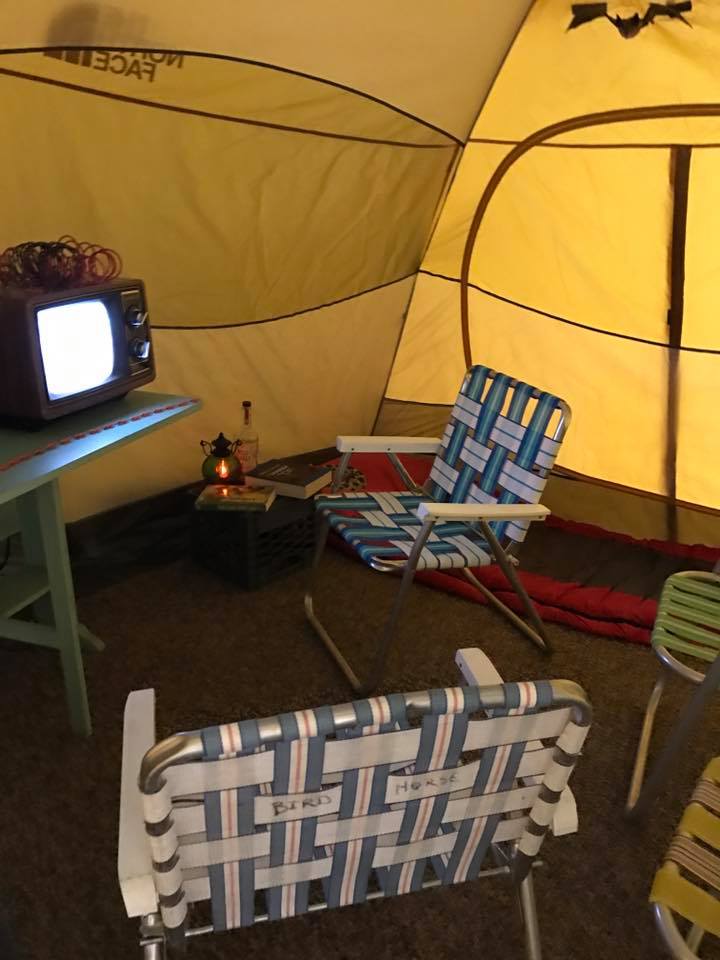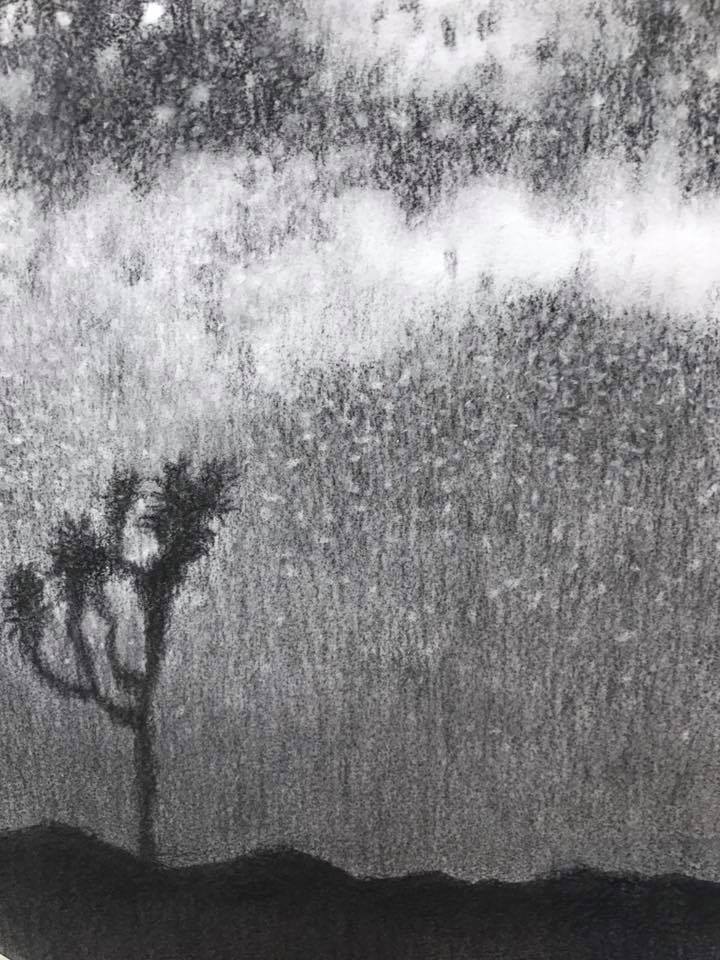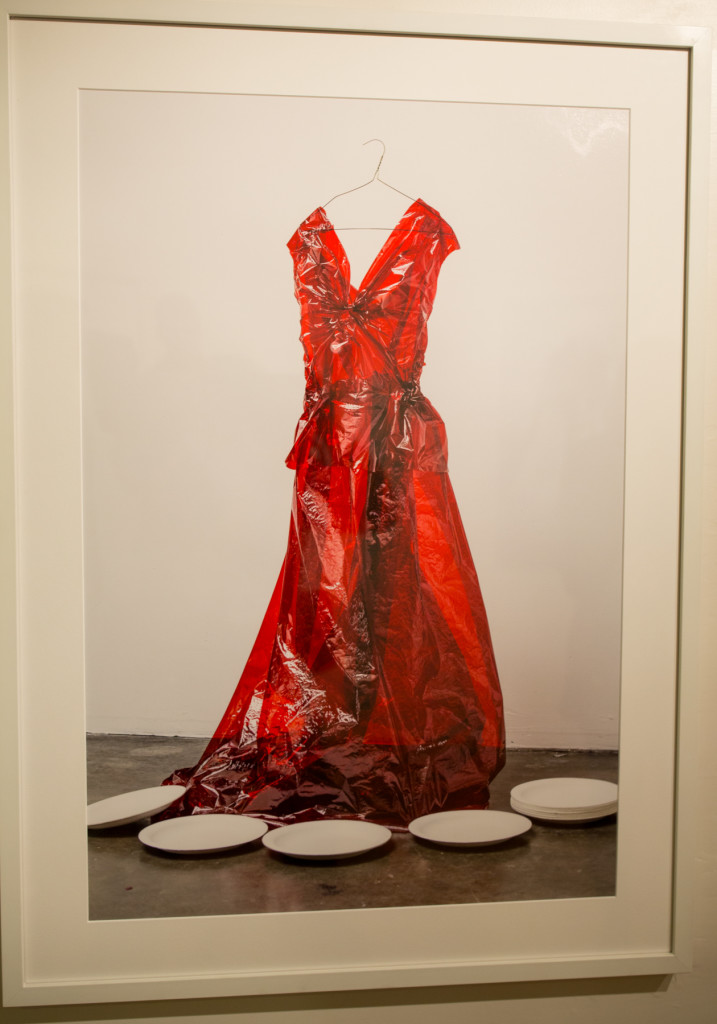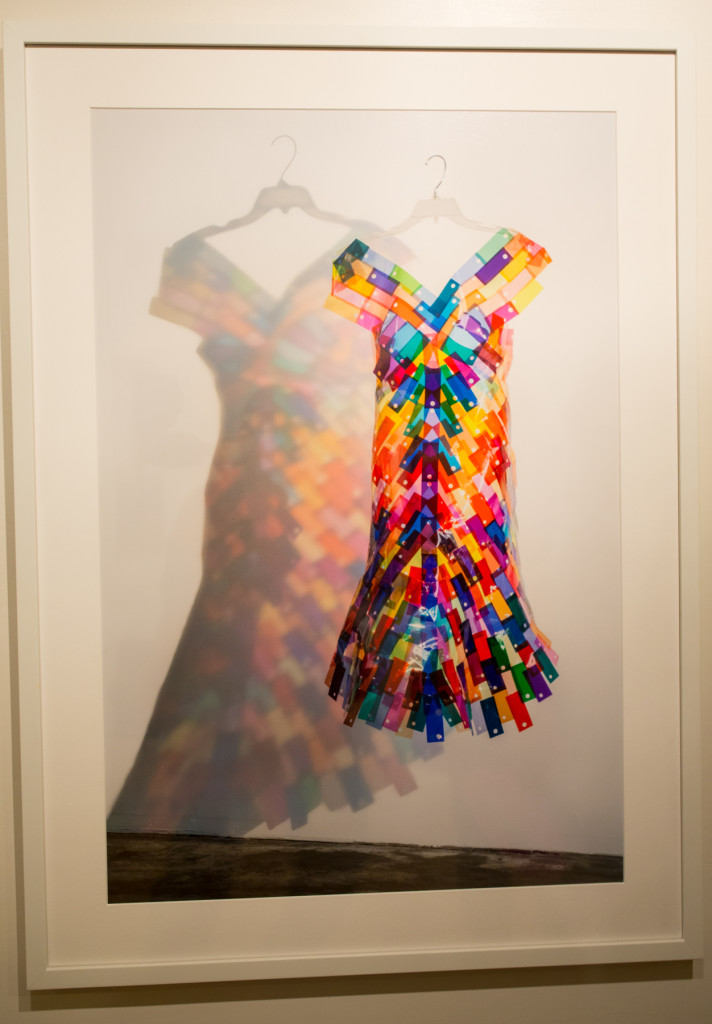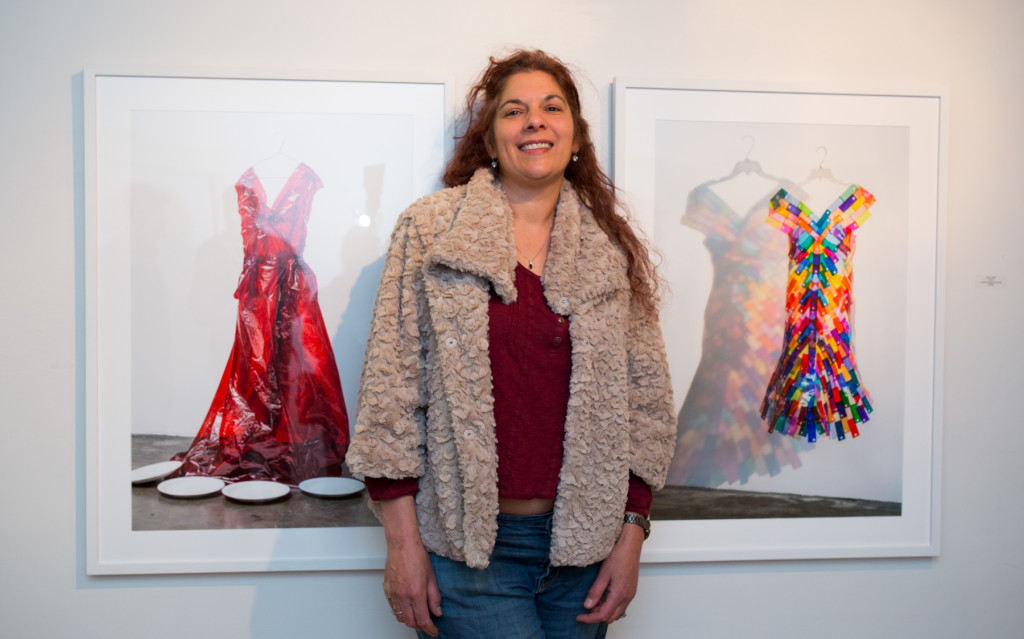The Museum of Art and History (MOAH) is a crown jewel in the Antelope Valley, a beautiful, airy modern space that makes the perfect two-story setting for the brilliant, magical exhibition Made in the Mojave.
Nine artists take on the landscape of the desert and create vibrant images from it, each original, startling, and fresh. It’s rare, frankly, to see so much beautiful art on a single subject that sings with this much meaning.
Artists include Samantha Fields, Kim Stringfellow, Carol Es, Catherine Ruane, Aline Mare, Ron Pinkerton, Nicolas Shake, Randi Hokett, and a site specific installation by Antelope Valley artist Marthe Aponte.
Samantha Field’s “Ten Years” includes stunning, large scale landscapes that depict dramatic, powerful desert scenes bordering on the apocalyptic. Filling a large first floor gallery space, these paintings offer sweeping vistas, roiling clouds, a deer seemingly both frozen and in mid-motion.
Spilling from the museum’s first floor windows, Randi Hokett’s jeweled mixed media “Crystalworks” look like desert geodes cracked open to reveal riveting beauty inside.
Catherine Ruane’s stunning black and white graphite and charcoal works feature intimate, textural visions of desert plants, starry skies, Joshua trees and yucca. “Dance Me to the Edge” pulls viewers into a world so perfectly defined one can almost feel the sharp spines, smell desert sage after a rain, caress the soft flowers.
Meticulously rendered, twelve small round drawings surround one larger central piece of a Joshua tree in bloom.
Marthe Aponte creates an installation in a darkened side room that glows with golden light. With “Memories of a Joshua Tree” she’s shaped a sensuously spiked tree and the goddess-like figures of mythological Fates.
This is work that is redolent with life and light, a portal, a beacon of life in the darkness.
Aline Mare’s “The Angle of Repose” is a lush, passionate exhibition that presents an up close look at vividly colored desert minutae, a seed pod, a poppy, tree roots. Fusing multiple images photographed, scanned, painted, and altered, these are compositions that defy simple interpretation or a single gaze.
The depths of the universe seem to emanate from a seedpod – and really, is this an illusion, or a wondrous truth?
Intense, saturated color and surreal structures made from desert discards mark the fascinating work of Nicolas Shake whose “Wasteland” combines sculptural arrangements with photographic compositions that could be the homes of interplanetary travelers.
Ron Pinkerton’s “The Last Stand” offers night skies and mysterious streaking stars, abandoned cars and empty pools, ghostly and transcendent.
Kim Stringfellow’s “The Mojave Project” documents the desert in its dangerous, transformative, and compelling glory. She takes on waste and abandonment, the complex landscape itself, with photography, artifacts, and what will be a large scale video installation scheduled to travel the country over a two year period, bringing the desert – so close to home here in Southern California – to more distant regions.
Carol Es gives us whimsical mystical oil paintings and collaged works inspired by Joshua Tree National park locations, and an installation of a campsite inside which the artist’s short film “Up to Now” is screened.
The desert often hides its vibrant life beneath the ground until a rain, or the quiet of nightfall brings out the creatures, the flowers, the wind to play. For a look at the secret heart of the desert and its sweeping magnificence, step inside MOAH and look around. There is nothing empty about this desert exhibition.
The show runs through July 30th and is well worth the drive from LA. MOAH is located at 665 Lancaster Blvd. in Lancaster.
- Genie Davis; Photos – Genie Davis and courtesy of artists



